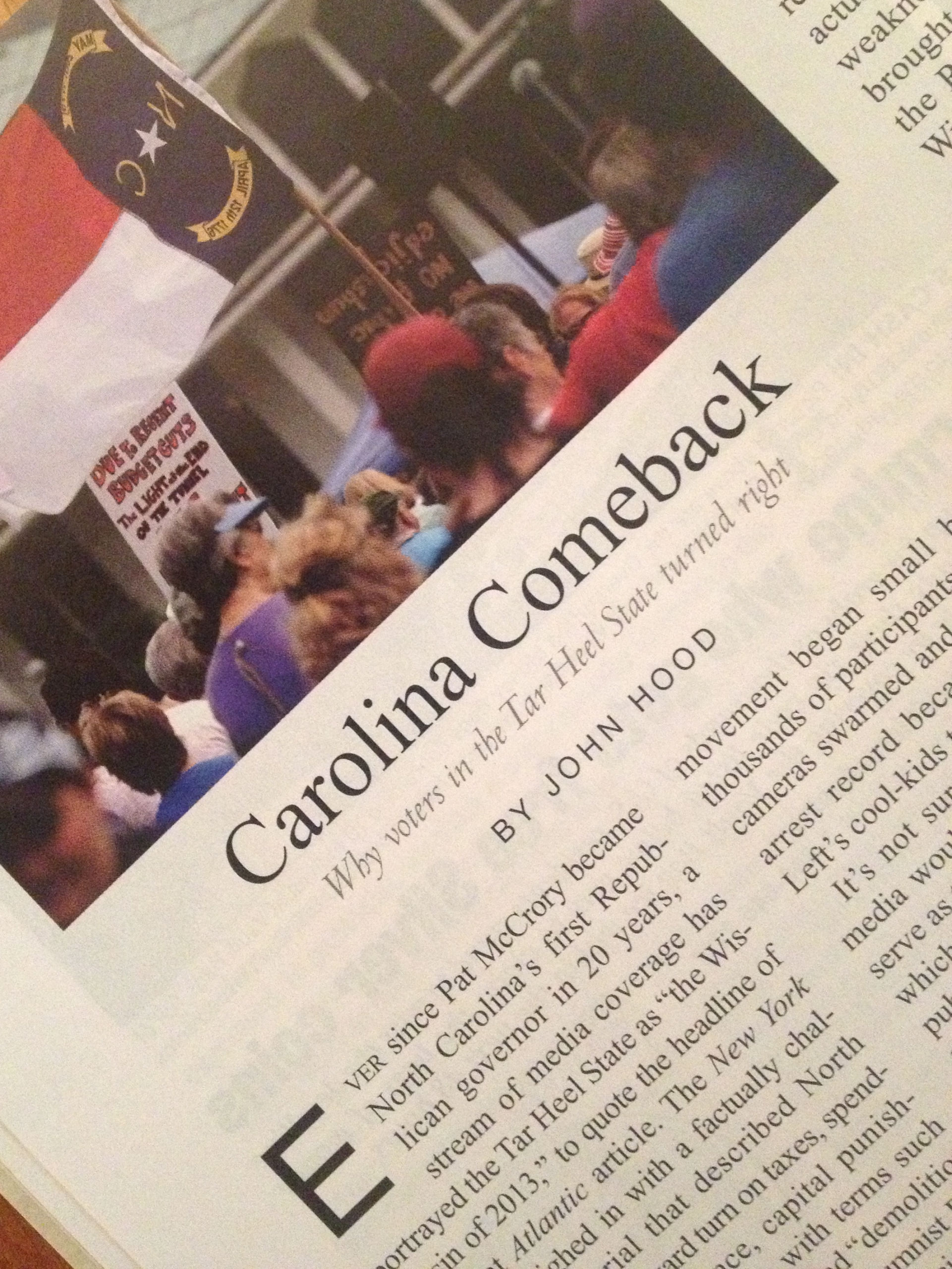 The latest print edition of National Review features John Hood’s assessment of the “Carolina Comeback” the state’s Republican elected leaders have launched.
The latest print edition of National Review features John Hood’s assessment of the “Carolina Comeback” the state’s Republican elected leaders have launched.
Following up on an earlier analysis for Investor’s Business Daily, Hood highlights the state’s pro-growth tax reform plan, then follows up with analysis of other key issues Gov. Pat McCrory and the Republican-led General Assembly addressed this year.
Contrary to liberal caricature, they, like most conservatives, do not believe that taxes and regulations are the only factors that affect state economies. They have also focused significant attention on increasing the productivity of public investments, such as those in infrastructure and education, while seeking ways to reduce the share of state spending devoted to transfer payments and other public consumption. During the 2013 legislative session, lawmakers rewrote the state’s transportation policies so as to reduce traffic congestion and encourage job creation. On education, they abolished teacher tenure, expanded the state’s charter-school program, and enacted two statewide voucher bills that will serve as many as 13,000 students within three years. The legislature also gave McCrory the green light to pursue a new competitive-contracting model for the state’s rapidly growing Medicaid program, which is sapping resources that would be better spent on roads, schools, or additional tax relief.
These policies put North Carolina squarely within a modern conservative vision of how states can promote economic freedom and prosperity. Conservatives agree with liberals about the economic importance of infrastructure and education. Long-term growth comes from investment: from the building the financial, physical and human capital necessary to start and grow successful businesses. Where conservatives and liberals often disagree is on how states can best foster capital formation. Liberals tend to focus primarily on public capital, such as schools and roads, while worrying less about the private investment that accounts for roughly 80 percent of the economy’s capital stock.
Higher taxes can finance higher levels of public investment, yes. But higher spending doesn’t necessarily result in higher-quality infrastructure or education. At the same time, higher taxes can lead to lower levels of private investment by giving entrepreneurs, investors, executives, and professionals a reason to take their financial and human capital elsewhere. Successful states find ways to build and maintain good public assets while keeping tax and regulatory costs low in order to attract private assets. As a colleague of mine, Jon Sanders, puts it, “State legislation creates jobs the way roads create cars.” By limiting their role to establishing the rule of law, protecting property rights, and funding true public goods, state governments facilitate prosperity through private initiative.


